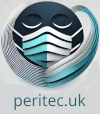too much or too little ?
A recent discussion between colleagues from the anaesthetic community in the UK centred on what can best be described as the granularity of an anaesthetic record. Put simply, is there a need to include every possible detail of every drug, procedure, device and event in the record, or is it sufficient to use some time-honoured abbreviations and shorthand, as alluded to by the title of this blog?
Can information be omitted because its inclusion is inferred, in some instances? For example, when performing a neuraxial block, a clinician may record the following in relation to infiltration of the skin with a local anaesthetic agent:
- Nothing – the skin infiltration procedure is inferred
- LA to skin
- Lidocaine to skin
- 1% lidocaine to skin
- 2ml of 1% lidocaine to skin
- 2ml of 1% lidocaine to skin, 23g needle
We can see a step-wise increase in the amount of detail recorded for this brief and very simple procedure.
[For the non-clinicians, the procedure is used to provide analgesia (pain relief) at the skin entry point, prior to the insertion of a larger gauge needle.]
How much detail is sufficient and under what circumstances would more detail be warranted? Should the batch numbers of both the drug and the needle be recorded? Arguments in favour of the ‘maximum detail’ approach may point toward patient safety, drug and equipment inventories, cost control and the medico-legal aspects of care, should there be an adverse event.
Most of us could probably agree that maximal detail is desirable, but it has to be balanced with what is practical in the care setting. Time spent jotting down the minutiae is time that could (or should) be spent observing the patient.
A possible compromise is to use technology to assist with the record keeping. Two options present themselves:
- Assistive features for data input in a digital care record system or AIMS
- A speech interface for data input to same
Looking at option 1 in more detail, ideally the UI would present a touch-screen interface where the user can select a pre-defined procedure (such as a neuraxial block). The application should have the ability to create, store and switch rapidly between user profiles, so that the UI recognises and adapts to the clinician interacting with it. If a clinician has previously set up a template for a neuraxial block, then in theory, a record containing the maximum detail could be created in just one or two button touches on the screen.
The option to edit the template is essential, for those days when the 23g needle supply has run dry, and a 25g is used instead.
Next to the screen there may be a QR code (or barcode) scanner that can scan and identify the local anaesthetic agent and the needle. One touch to confirm each, and both drug and device are recorded.
Option 2 is just as flexible, and with modern speech and command-based interfaces, a UI could (also in theory) accept voice commands. For example:
[Command Word] Record the administration of 2ml 1% lidocaine to the skin using a 25 gauge needle
This option is being explored in a discussion paper, with a view to building a prototype for proof-of-concept. A subtle adaptation would be for the command-word to identify the clinician, so that they don’t have to announce themselves each time to attest a new record entry.
Scaling Up The Detail
I chose a very short, minor procedure to illustrate the point about potential benefits of novel interfaces to digital records. Taken at scale, the time and effort required to record larger, more complex procedures could be reduced drastically, with many secondary benefits to safety and quality improvement.
If you’re interested in helping to build a PoC prototype, or to join the group over at SCATA looking at speech interfaces to AIMS, please get in touch.
